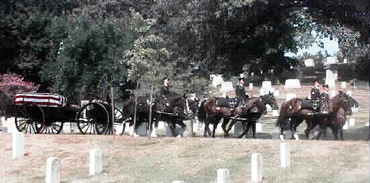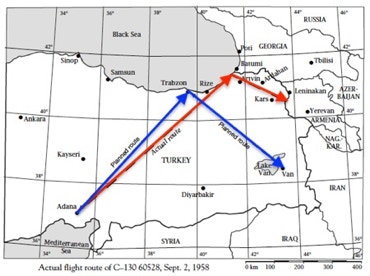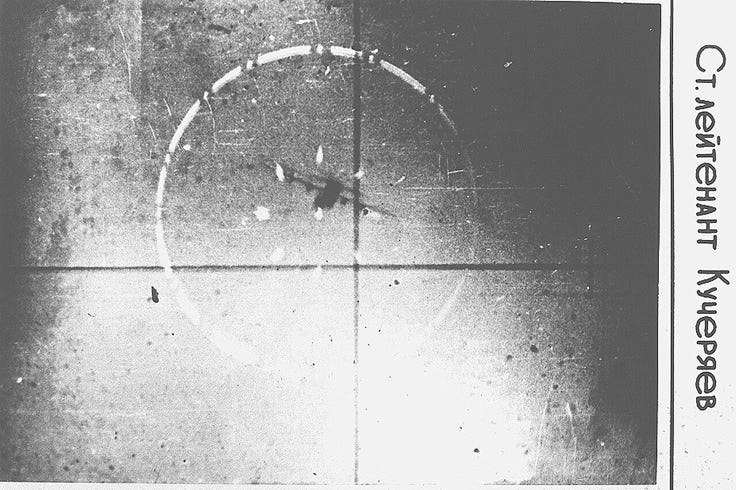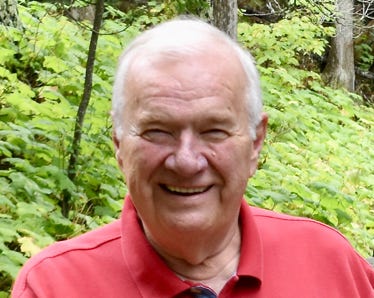DUTY, HONOR, COURAGE, RESILIANCE
Talking Proud: Service & Sacrifice
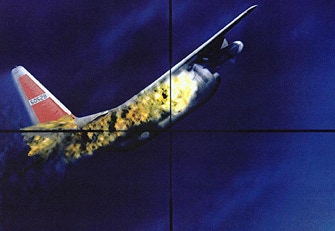
Airborne Peripheral Reconnaissance, Cold War Losses
“Silent Sacrifices”
USAF C-130A , Soviet Armenia, September 2, 1958
Four Soviet MiG-17 fighters from the 11th Air Army, Leninakan AB, Soviet Armenia, attacked and shot down a C-130A-II (60528) after it had crossed into Armenian airspace on September 2, 1958. There were 17 souls aboard, all killed in action (KIA). This is a photo of the aircraft lost on September 2, 1958, #60528.
The National Cryptologic Foundation has commented on why the C-130 might have violated Armenian airspace,
“Why did the C-130 cross into Armenian space? The answer is unclear. One theory is that aircraft personnel were confused by Turkish navigational beacons that were on similar frequencies to those in Armenia and Georgia.”
In what was known as the Sun Valley or Rivet Victor configuration, the aircraft had a front-end crew of six from the 7406th Support Squadron and eleven USAFSS crew members from Det 1, 6911th Radio Group Mobile.
All hands were assigned to Rhein-Main Air Base in Germany, on temporary duty to Incirlik AB, Adana, Turkey. They staged out of Incirlik AB for this mission.
The crew included the following (roles on board the C-130 were gleaned from Together We Served):
Aircrew
Capt. Rudy Swiestra, aircraft commander
Capt. John Simpson, co-pilot
Capt. Paul Duncan, starboard pilot
1st Lt. Ricardo Villareal, lead navigator
Capt Edward Jeruss, second navigator
SSgt Leroy Price, flight engineer
USAFSS crew
MSgt. George Petrochilos, Romanian linguist
TSgt Arthur Mello, airborne maintenance technician
A1C Robert Oshinskie, Romanian linguist
A2C Gerald Maggiacomo, Russian linguist
A2C Clement Mankins, Russian linguist
A2C Robert Moore, Russian linguist
A2c Archie Bourg, Jr., airborne maintenance technician
A2C Harold Kamps, Serbo-Croatian linguist
A2C Joel Fields, Russian linguist
A2C James Ferguson, Jr., Russian linguist
A2C Gerald Medeiros, Russian linguist.
The USAF and the National Security Agency (NSA) had come to realize the importance of what they called the Airborne Communication Reconnaissance Program, ACRP. In 1958, the USAF allocated eight C-130A transports to the USAF Security Service (USAFSS) to replace the RB-50s and improve overall effectiveness. The C-130s carried ten radio intercept positions. They first arrived at Rhein-Main AFB in July 1958.
The idea was to put the intercept positions aboard a transport so that opposing forces would see that they were non-lethal. The hope was also to disguise the real mission.
The aircraft crashed on Soviet soil near the village of Sasnashen, 35 miles northwest of Yerevan, the Armenian capital. This area was in the Tbilisi Air Defense District. The C-130 entered Soviet airspace, and the MiG pilots reported they had shot the aircraft down, and it had crashed. Soviet air warning facilities broadcast a message saying, “Target destroyed.”
NSA had recordings of the Soviet pilots’ conversations, so there is no doubt what the Soviets did. The US played the recorded tapes to the Soviet ambassador, who refused to listen.
The Soviets returned six sets of remains and denied knowing what happened to the other 11. That raised eyebrows since there were 11 USAFSS cryptographic operators on board, leading one to wonder whether they were held captive for interrogation.
The USIS Washington File reported the remains of six were returned and identified: Capt. Rudy J. Swiestra, Capt. Edward J. Jeruss, Capt. John E. Simpson, 1st Lt. Ricardo M. Villarreal, Airman 2nd Class Gerald H. Medeiros, and Airman 2nd Class Archie T. Bourg Jr.
All crewmembers were buried in Arlington National Cemetery as a group. The photo shows the casket containing the remains of the crew being escorted to the gravesite in Section 34 of Arlington National Cemetery by the US Air Force Honor Guard, September 2, 1998.
NSA said,
“Unlike other incidents where American aircraft were lost over water, 60528 crashed on Soviet soil. Not willing to admit that 60528 was on a spy mission, the U.S. Government did not confront the Soviets until September 6, when the Soviets denied all knowledge of the incident.
“They stated on September 12 that they had found a destroyed airplane, and based on discovered remains, ‘it may be assumed that six crewmen perished.’ In response to a U.S. demand for information about eleven missing crew members, the Soviets stated on 19 September that ‘no other information on crew members is at the disposal of the Soviet side.’
“A status quo ensued, and the Soviets provided no additional info on the eleven missing airmen. Finally, in 1991, Russian President Yeltsin began releasing 'available' information on the shoot down.”
A US Army team went to the crash site in 1993 and recovered the rest of the remains, including more than 2,000 bone and tooth fragments, life support equipment, personal effects, and the aircraft wreckage.
NSA reported,
“A forensic report verified the number of human remains (six) and noted that other remains may have been present, but that intensity of the ensuing fire prevented identification of additional remains. No one was seen parachuting from the C-130. The report concludes that wreckage photos suggest that no one on board could have survived.”
The mission plan (blue arrows) was to fly from Adana to Trabzon, Turkey, on the coast of the Black Sea, turn right to Van, Turkey, in southeast Turkey, and then fly a racetrack pattern between the two. The course would parallel Soviet territories. The crew checked in from Trabzon at 25,000 ft. and was never heard from again. The red arrow approximates the C-130 going off course and into Armenian airspace.
The weather was reported as good. The Soviets did not attempt to contact the C-130 or force her down.
Larry Tart, who authored the book The Price of Vigilance, said the aircraft left Incirlik at 1121 hours local time. Tart said, “The crew reported passing over Trabzon (Turkey) at 1242 hours, but cloud cover was heavy, and Soviet tracking showed the mission grossly off-course by 1242.”
Four MiG-17s were scrambled at 1300 hours. The C-130 violated Armenian airspace at 1306. The MiGs shot her down at 1412, over an hour later. Tart said, “The C-130 exploded on impact and burned for 18 hours.”
The intercepts of the Soviet pilot and ground controller transmissions were very revealing. NSA has said, “Four Soviet MiG pilots took turns firing on the unarmed transport.” In short, it was a “turkey shoot.” This is a summary:
The intercepts revealed three Soviet fighters, track numbers 582, 201, and 218. Track 581 was based in Yerevan, while the other two were based in Leninakan. All three attacked the C-130. A fourth pilot, 577, was scrambled from Yerevan and patrolled the area after the attacks.
Pilot 582 reported he saw a large target at an altitude of 10,000 meters (32,808 ft). The fighters were already at that altitude.
Pilot 201 said, “I see the target, attack!” 201 went on to say right away, “I am attacking the target.”
582 acknowledged the attack was underway.
There was a bit of chatter about attacking, but it is hard to tell if they had fired yet. What is clear is that several of the pilots shouted, “Attack, attack, attack,” and got a response, “I am attacking.”
201 then reported that the target speed was 300, that he was flying along with it, and that it was turning toward the fence, a usual reference to the border, assuming he had turned toward the Turkish border.
Then, all of a sudden, 201 reported the target is burning.
582 exclaimed, “That’s a hit.”
201 said the target was burning and going toward the fence.
218 then said he was attacking. They reported the target burning and the tail falling off.
One pilot said, “Look at him, he will not get away, he is already falling.”
They said they saw him falling, and one of the pilots said he would “finish him off, I will finish him off on the run.”
They talked about the target losing control and going down, then turning over.
582 was ordered to attack after the C-130 had already been hit and was burning.
The Soviet pilots then coordinated their return to their home base. Throughout the engagement, there seemed to be a sense of excitement and almost disbelief that they actually shot the aircraft down. The pilots had gunsight imagery of the attack.
This photo is an enhanced photo taken from the gun camera of a Soviet MiG-17 after the C-130 was hit. This loss has been controversial because it was a “turkey shoot” for the MiGs. This aircraft was a transport, a slow mover, unarmed and alone.
The US State Department has released many press releases, one of which pertains to this C-130 shootdown. Press Release No. 93 (PR 93 shown in the upper right-hand corner of the releases) provides summaries of US representations to the Soviet Government regarding this event. It also reflects the transcript of tape-recorded conversations among the Soviet fighter pilots involved. Furthermore, it contains an article from Sovetskaya Aviatsive, Moscow, September 19, 1958. This article details activity at the anti-aircraft defense posts involved in this shootdown. This PR 93 is interesting reading if you choose.
When the villagers heard the crash, many rushed to the scene to try to help the airmen.
CIA has published what it calls “Studies in Intelligence.” It reported that “Wolfgang Schreyer produced a story of the (C-130) crash which, published in 1960 in the East Berlin magazine Neueberlin Illustriertte and digested in the Soviet magazine Ogonek, said 11 of the crew parachuted to earth and were captured and imprisoned as spies.”
The CIA report goes on to say the “US ambassador in Moscow thereupon requested clarification in light of (Nikita) Khrushchev’s (First Secretary of the Communist Party of the Soviet Union from 1953 to 1964, and Chairman of the Council of Ministers) earlier denial that the Soviets had shot the plane down or knew anything about the eleven missing men. The editor of the East German magazine was summarily dismissed along with several colleagues, and Schreyer received a slap in the knuckles.”
CIA said that Schreyer used “precise statistics, photographs, and a wealth of well-explained technical details and his persistent display of sophistication in intelligence matters all suggest that he had more official help than the usual pre-packaged bundle of newspaper clippings and other aids furnished propagandists. One suspects that … he was afforded the collaboration of an adviser from the East German or Soviet Security Service.”
CIA noted, “The shooting down and capture of the American fliers has disappeared,” meaning that nothing more was said about this allegation.
Every year since the crash, the local villagers go to the crash site and place flowers on a memorial erected by Armenia in 1993. The plaques read:
"We must never forget that freedom is never really free. It is the most costly thing in the world. Freedom is never paid in a lump sum. Installments come due in every generation. All any of us can do is offer the generations that follow a chance for freedom."
It is worth noting that two American defectors to the USSR from the NSA, William Martin and Bernon F. Mitchell, confirmed to the Soviets that this C-130 was on an “espionage mission.” They appeared at a press conference in Moscow on September 6, 1960. The New York Times reported they were angry because the US was “spying on allies, deliberately violating borders with U-2, RB-47, C-130 aircraft.” They told the audience a “high official of the NSA had told one of them that the (C-130) plane was ‘carrying electronics specialists and special equipment for receiving at close range the signals of Soviet radar transmitters.’ The official was said to have revealed that the Turkish-Armenian border has been deliberately crossed to get into the immediate proximity of Soviet radar installations.”
President Eisenhower called them traitors.
__________
USAF RB-50G, Sea of Japan, September 10, 1956
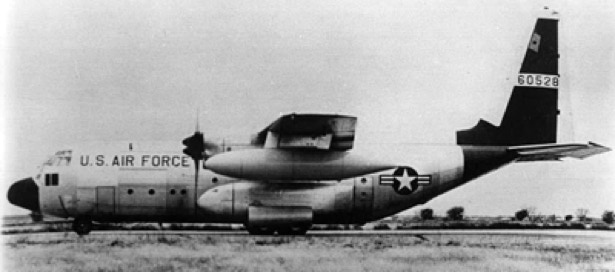
Click to zoom graphic-photo
Table of Contents
- Introduction
- USN PB4Y2, Baltic Sea, April 8, 1950
- USN P2V Neptune, Sea of Japan, November 6, 1951
- USAF RB-29, June 13, Sea of Japan, June 13, 1952
- USAF RB-29, Sea of Japan, October 7, 1952
- USAF RB-50, Sea of Japan, July 29, 1953
- USN P2V, Sea of Japan, September 4, 1954
- USAF RB-29A , Sea of Japan, November 7, 1954
- USAF RB-47 , off-shore Kamchatka Peninsula, April 18, 1955
- USAF RB-50G , Sea of Japan, September 10, 1956
- USAF C-130A , Soviet Armenia, September 2, 1958
- USAF RB-47H , Barents Sea, July 1, 1960
- USAF RB-66C , East Germany, March 10, 1964

